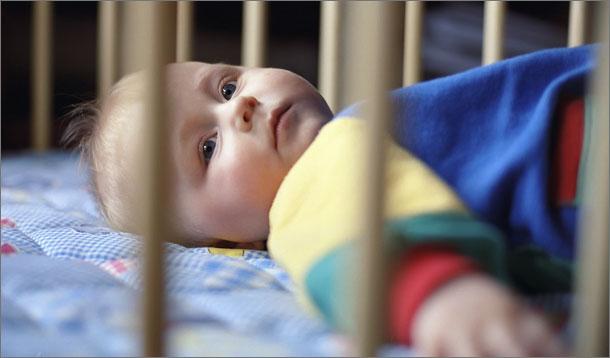
Yummy Mummy Mensa S. asks:
 We co-sleep with our 14 month old breastfed baby and are trying to transfer her to sleep in her crib without using crying it out. Suggestions?? She usually only nurses twice during the night but cries if we even think of setting her in her crib.
We co-sleep with our 14 month old breastfed baby and are trying to transfer her to sleep in her crib without using crying it out. Suggestions?? She usually only nurses twice during the night but cries if we even think of setting her in her crib.
Sleep Consultant, Pam Nease answers:
 You are not alone. This is a common situation for many parents, but it can be resolved within a couple of weeks.
You are not alone. This is a common situation for many parents, but it can be resolved within a couple of weeks.
To begin with, think of sleep as a journey from point A being awake to point B being asleep. When we take that journey, it is actually a skill that we use and that we learned at some point in our lives. For adults, we have various internal strategies to help us such as lying in a certain position, reading a book or keeping the window open.
For your daughter, she has developed an external strategy to fall asleep and/or to get back to sleep – she needs your presence (co-sleeping) and to be nursed. She has become dependent upon you, and you have become her sleep prop. In order to be successful at this new skill, she needs to say “good-bye” to the old external strategies and say “hello” to a new internal strategy. When she learns how to fall asleep independently in her crib, she will be able to take herself back into sleep if she wakes up in the night.
I do not advocate crying it out and completely agree that there is a better way. Unfortunately, because of your daughter’s age, there will be crying involved. She will be trying to communicate through her tears that change is difficult and that she doesn’t like it. With newborns, you can avoid any crying at all by establishing the right habits at an early age.
Step 1: Choose an early bedtime. The best time is between 7 and 7:30 pm. If you wait until after 8 pm, she will get overtired and have a harder time falling asleep, staying asleep and waking up after 6 am the next day.
Step 2: Put your daughter to sleep in the same place every night. Putting her to bed in a familiar place lets her know she is safe and that she is in a place where sleep is expected of her.
Step 3: Create a predictable bedtime routine. Consistency and predictability are really important to a toddler. When she knows what to expect at bedtime, it makes it much easier for her to make the transition from waking to sleeping. Rather than putting her to sleep, your job will be to lovingly guide her there. My personal favourite takes about 30 to 45 minutes and entails: bath, pjs, sleep sack (optional) nurse (keep awake) 1 book, 1 song, kisses and hugs.
Step 4: Put your daughter to bed AWAKE! This is most likely going to be the toughest step for you to take but the most critical. This is how she will discover how to fall asleep using her own internal strategies. She will cry and protest the first night but it will get better as long as you are consistent. A small stuffed animal or a small blanket is a wonderful tool that your daughter can use to fall asleep with. (Do not use a soother.) I recommend that you and/or your partner stay in the room to offer her comfort and support through careful touch and soothing words. Over a period of 10 days gradually move your chair away from the crib. Then on night 10, you will be able to complete your loving routine, say good night and leave the room.
Step 5: If your daughter wakes up during the night, wait a few minutes before intervening. Everyone – babies and adults alike – will actually wake up several times every night. For most adults, these waking moments are so brief that we don’t even remember them the next morning. However, many babies will immediately start to fuss or cry when they wake up. This is simply because they haven’t learned how to fall asleep on their own. Give your daughter a few minutes and see if she can self-settle on her own first. She might just surprise you! If she doesn’t, you’ll want to go in and offer some comfort by resuming your spot in the chair from where you left off at bedtime.
Good Luck on your journey to great sleep. It is one of the most precious life skills and gift you can ever give your little one. Studies have shown that poor sleep in children is linked to behavioural issues, depression, learning disabilities, diabetes and obesity.